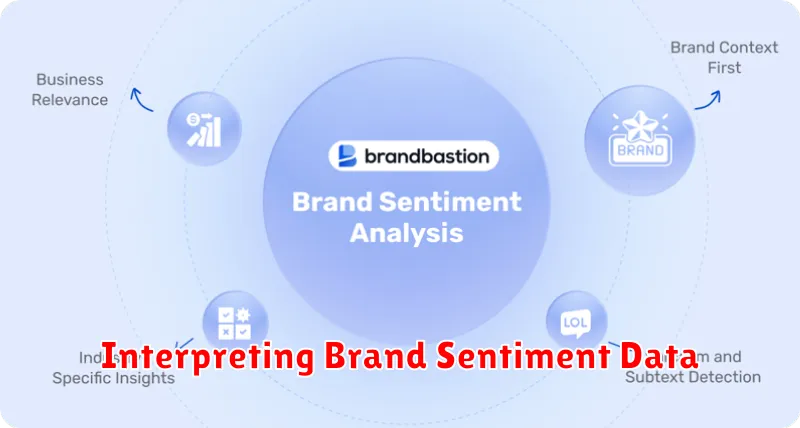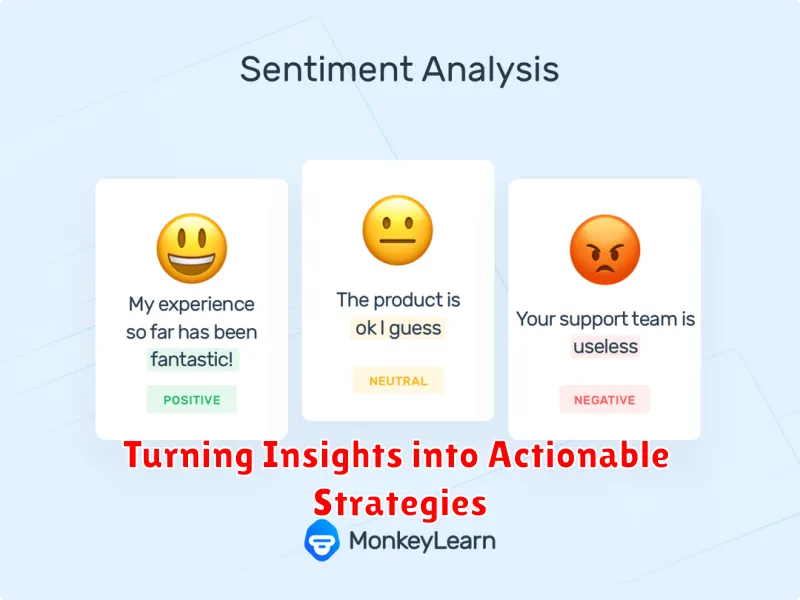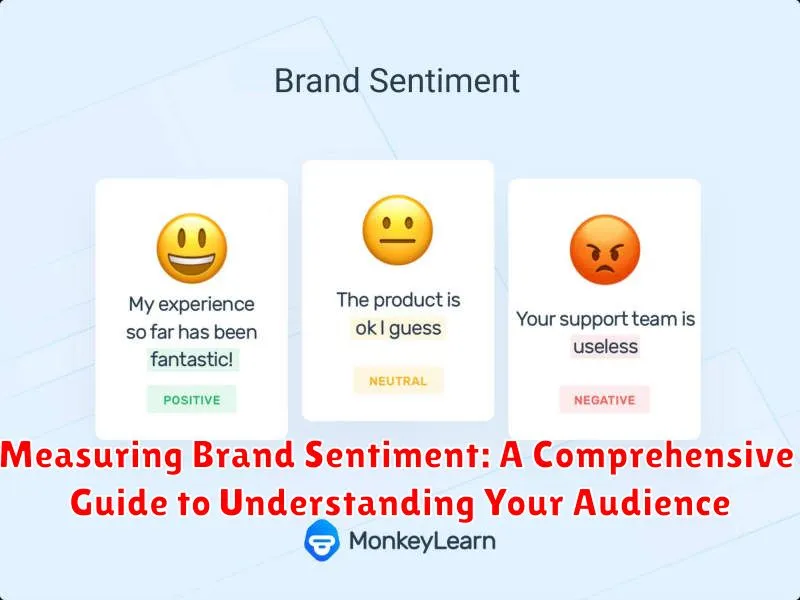In today’s dynamic market, understanding public perception is crucial for any successful business. Measuring brand sentiment provides invaluable insights into how your audience perceives your brand, products, and services. This comprehensive guide will equip you with the knowledge and tools necessary to effectively gauge brand sentiment, empowering you to make data-driven decisions that enhance brand reputation, improve customer satisfaction, and drive business growth. By analyzing brand sentiment, you gain a deeper understanding of customer needs, preferences, and pain points, enabling you to tailor your strategies for optimal impact and stay ahead of the competition.
This guide explores various methods for measuring brand sentiment, ranging from manual analysis of social media conversations and customer reviews to leveraging sophisticated sentiment analysis software and AI-powered tools. We’ll delve into the importance of choosing the right metrics, interpreting the data, and applying these insights to refine your marketing campaigns, product development, and overall customer experience. Whether you’re a seasoned marketing professional or just beginning to explore the world of brand sentiment analysis, this guide will provide a comprehensive foundation for harnessing the power of brand sentiment to achieve your business objectives.
Defining Brand Sentiment and Its Importance
Brand sentiment refers to the overall emotion or feeling expressed by consumers towards a particular brand, product, or service. It’s a measure of public opinion, reflecting how people perceive and talk about your brand, whether positively, negatively, or neutrally. Understanding brand sentiment is crucial for businesses of all sizes.
Positive sentiment can indicate brand loyalty, advocacy, and strong purchase intent. Negative sentiment, on the other hand, can highlight areas for improvement, potentially mitigating damage to brand reputation and preventing customer churn. Neutral sentiment suggests a need for stronger brand messaging and engagement to cultivate more positive feelings.
Tracking brand sentiment provides valuable insights into customer perception, which can inform strategic decisions related to product development, marketing campaigns, and customer service improvements. By actively monitoring brand sentiment, businesses can identify emerging trends, address customer concerns, and protect their brand reputation.
Methods for Measuring Brand Sentiment
Accurately gauging brand sentiment requires a multi-faceted approach. Several key methods can be employed to capture a holistic view of public opinion.
Social listening involves monitoring online conversations and mentions related to your brand across various platforms. This provides real-time insights into customer perceptions and emerging trends.
Customer feedback analysis, through reviews, surveys, and support interactions, offers direct insights into customer satisfaction and areas for improvement. This method can uncover specific pain points and drivers of positive sentiment.
Sentiment analysis software utilizes natural language processing to automate the analysis of text data, providing a quantifiable measure of positive, negative, and neutral sentiment expressed towards your brand.
Combining these methods allows for a comprehensive understanding of brand sentiment.
Using Social Media Listening Tools
Social media listening tools provide a powerful way to tap into the vast reservoir of online conversations about your brand. These tools automate the process of monitoring social media platforms, blogs, forums, and other online spaces for mentions of your brand, products, or competitors.
Key features of social media listening tools include the ability to track keywords, hashtags, and specific user accounts. They aggregate mentions and analyze them for sentiment, providing a real-time view of how people are perceiving your brand.
By setting up targeted searches, you can identify emerging trends, understand customer pain points, and gauge the overall sentiment towards your brand and marketing campaigns. These tools often provide dashboards and reporting features that visualize data, making it easier to understand sentiment trends over time.
Some tools offer advanced features such as competitor analysis, influencer identification, and crisis monitoring, allowing for a comprehensive understanding of the social media landscape relevant to your brand.
Analyzing Customer Feedback and Reviews
Customer feedback and reviews offer a valuable source of brand sentiment data, directly reflecting customer experiences and perceptions. Actively monitoring and analyzing this feedback provides crucial insight into what aspects of your brand resonate with customers and what areas need improvement.
Several avenues exist for collecting this data. Product reviews on e-commerce platforms like Amazon or company websites offer readily available sentiment information. Customer service interactions, including emails, chat logs, and phone calls, contain rich qualitative data about customer sentiment. Feedback forms and dedicated customer satisfaction surveys also provide valuable structured data.
Categorizing feedback by topic (e.g., product quality, customer service, pricing) helps identify key drivers of sentiment. Look for recurring themes and patterns to pinpoint specific areas of strength and weakness. This targeted approach allows for more effective and focused improvement strategies.
Conducting Surveys and Polls
Surveys and polls offer a direct line to understanding customer sentiment. By posing specific questions, you can gauge opinions about your brand, products, or services. Targeted surveys allow you to segment your audience and gain deeper insights into specific demographics or customer groups.
Short polls can be used to quickly assess sentiment on a particular topic or campaign. They are easy to distribute and provide immediate feedback. More comprehensive surveys allow for nuanced understanding, exploring the “why” behind customer sentiment.
Consider using a variety of question types, such as multiple choice, rating scales (e.g., Likert scales), and open-ended questions to gather both quantitative and qualitative data. Ensure questions are clear, concise, and unbiased to gather reliable data.
Leveraging Sentiment Analysis Software
Sentiment analysis software automates the process of identifying and categorizing emotions expressed in text data. These tools employ natural language processing (NLP) and machine learning algorithms to analyze large volumes of text from various sources, including social media, customer reviews, and surveys. They categorize text as positive, negative, or neutral, providing a quantifiable measure of overall sentiment.
Key features of sentiment analysis software often include:
- Real-time analysis: Providing up-to-the-minute sentiment tracking.
- Emotion detection: Identifying specific emotions like joy, anger, or sadness.
- Aspect-based sentiment analysis: Pinpointing sentiment towards specific features or aspects of a product or service.
- Automated reporting: Generating dashboards and reports that visualize sentiment trends and patterns.
Choosing the right software involves considering factors like data sources, languages supported, and desired level of analysis granularity. Properly implemented sentiment analysis software provides valuable, data-driven insights into customer perception.
Interpreting Brand Sentiment Data

Interpreting brand sentiment data requires a nuanced approach, going beyond simply categorizing data as positive, negative, or neutral. Context is crucial. A seemingly negative comment might reveal valuable feedback about a specific product feature, while a positive comment could be sarcastic and require further investigation.
Volume of mentions is another key factor. A surge in negative mentions, even if the overall sentiment remains relatively balanced, could indicate a brewing crisis. Conversely, a low volume of mentions might suggest a lack of brand awareness or engagement.
Trends over time are equally important. Tracking sentiment changes over time helps identify the impact of marketing campaigns, product launches, or external events on brand perception. This allows for proactive adjustments to strategies and messaging.
Analyzing sentiment by demographic can reveal valuable insights into how different customer segments perceive your brand. This information can be used to tailor marketing efforts and improve customer satisfaction across various demographics.
Turning Insights into Actionable Strategies

Once you’ve analyzed and interpreted your brand sentiment data, the crucial next step is transforming these insights into actionable strategies. This involves developing specific plans and initiatives designed to address the sentiment trends you’ve observed.
For positive sentiment, focus on amplification and reinforcement. Showcase positive reviews, engage with enthusiastic customers, and identify the drivers of positive experiences to replicate them. This might involve promoting user-generated content, implementing loyalty programs, or highlighting specific product features that resonate with your audience.
Addressing negative sentiment requires a proactive and responsive approach. Acknowledge customer concerns, offer solutions to identified problems, and demonstrate a commitment to improvement. Strategies may include improving customer service protocols, revising product features, or proactively addressing negative reviews and feedback. Tracking the effectiveness of these actions over time is crucial for demonstrating responsiveness and building trust.
Neutral sentiment presents an opportunity to sway opinions towards the positive. Targeted campaigns, engaging content, and personalized outreach can help cultivate stronger connections and foster a more favorable perception of your brand.

